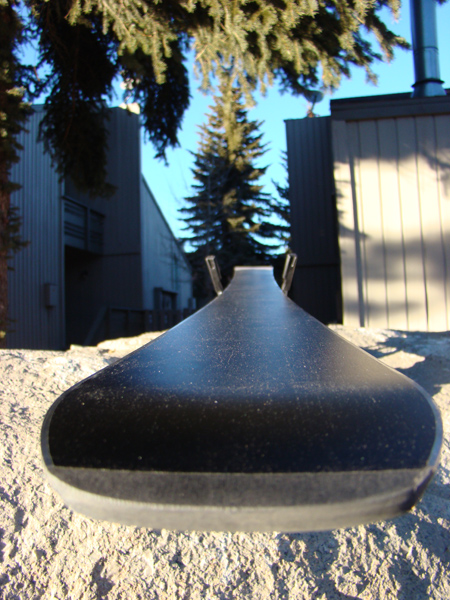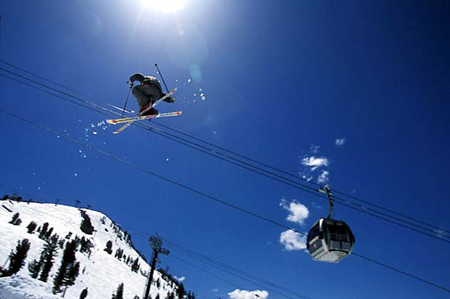What skis to buy?
Buying new skis can be a tricky business, there are so many choices out there that can make the decision confusing. Here’s a rough guide to help you out. A new pair of skis can make a big difference to your skiing especially if you have some relics from the 1970s!
Before you even start looking at skis think about where you are likely to be skiing and on what kind of snow. Be honest and realistic, that way you will purchase a ski best suited to your needs. Likewise think about your skill level. If you are a complete beginner don’t go for an expert ski and vice versa. Once you have established your skiing needs there are a few ski characteristics to consider.
Length: As a rule of thumb the ski length tip be somewhere between your chin and nose when held up beside you. If you are a beginner err on the smaller side. The type of ski you get will also influence length, for example you might want to go longer on a powder ski to aid floatation in the pow pow.
Radius: Radius refers to the length of turn the ski will make when it is put on edge. The more side cut a ski has the shorter the radius. I ski on a very narrow ski with a big side cut that lets me make 11m carved turns. Good fun on the groomers but a little grabby in the crud. For an all round ski look for something in the 17-22m range. This really depends on the type of turns you enjoy making though, go longer for big turns, smaller for short turns.
Width: Width is measured in three places, the tip, under the foot and tail. The wider a ski the more floatation you have in powder but the slower the reaction to your movements to initiate the turn. A narrower ski gives you more grip in icy conditions. So think about where you will spend most of your time skiing. For soft powder snow go for 100mm or more under foot , for harder snow go for something around 65-80mm. In between 80mm to 100mm gives you an allround ski but they might not be great on ice or powder.
Ski Stiffness: Usually the stiffer a ski the more it holds an edge and the more precise it is but also the less forgiving it is to mistakes. The better skier you are the stiffer you can go, if you are a beginner steer towards softer and more forgiving skis.
Rocker: Rockered skis have been out for a while now and are becoming much more main stream. Rocker refers to the tip, tail or both being bent up. This allows for better floatation in powder and makes it less likely to hook the skis tips if you are a beginner. However, in firm conditions rocker leaves you with less edge and so less grip. The amount of rocker varies from fully rockered to just a wee bit.
Twin Tips: If you want to ski backwards then twin tips are the way to go. These skis are preferred by park enthusiasts (aka park rats). One side effect of twin tips is that they generally spray snow out from behind which can be an occupational hazard if you are following someone skiing on them!
Ok so now you hopefully have an idea of the type of ski you want, and we haven’t even looked at skis yet! The next step is to see what is out there that fits what you need. There are a number of places to look.
Local Ski Shop: Visit a local shop if you have one, tell them what you want in terms of length, width, rocker, radius and stiffness. Then they will be able to show you the skis they have to match your needs. If you have put some thought into exactly what kind of ski you want then you should be just left with just a few choices rather than dozens.

Look for the skis dimensions which are usually easy to find; they should tell you the length, radius and width
Demo skis: The best thing to do if you can is to try before you buy. Many mountains have demo days where different ski companies will offer their skis to test for free. This way you can try lots of skis from one brand or a host of brands. Also most mountains and rental shops have demo centres where you can rent skis that they sell to get a feel for them. If you are heading to Mammoth and we actually get snow then visit yeah sweet online. They offer all mountain and powder ski demos with a delivery service included.
Websites: A great source for skis are online stores like evo and skis.com. Often you can find smoking good deals on last years models (often the only difference is the top sheet).
If you are in the market for new skis then I hope this article has helped focus your search. If not I’d be happy to reply to any questions you might have regarding the best ski for you. Happy shopping!




